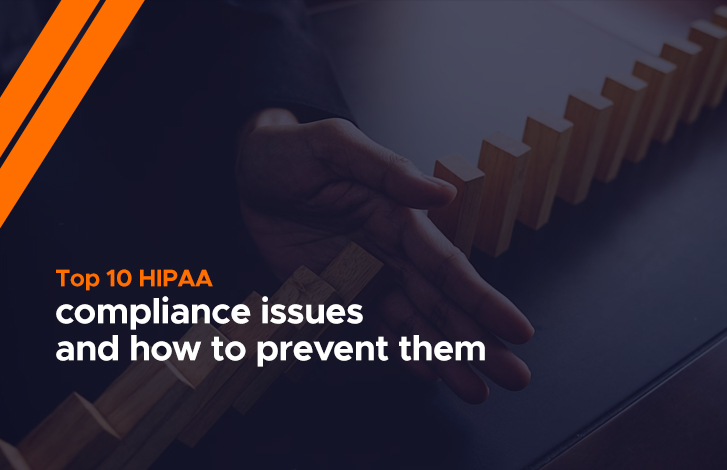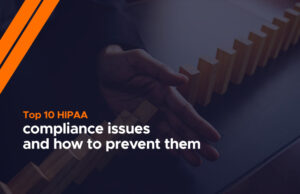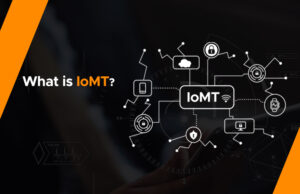The numerous HIPAA requirements are frequently outside administrators’ minds because there are many things to manage when running a medical practice. HIPAA violations, however, can be very expensive.
Did you know you could be subject to a $50,000 fine per offense and a $1.5 million annual cap per violation? It’s crucial to ensure that your procedures are always HIPAA-compliant and that your staff has received the necessary training to follow the rules.
The Health Insurance Portability and Accountability Act (HIPAA) is a federal law that governs the privacy and security of protected health information (PHI). HIPAA compliance is essential for healthcare organizations to avoid legal and financial penalties, maintain patient trust, and protect sensitive health information. Essentially, This article discusses HIPAA privacy rules and reviews the top 10 HIPAA compliance issues and how to prevent them.
The HIPAA Privacy Rule
The HIPAA Privacy Rule is an important component of the Health Insurance Portability and Accountability Act (HIPAA) that aims to protect individuals’ medical records and other personal health information. Initially, enacted in 2003, the Privacy Rule establishes national standards for safeguarding the privacy and confidentiality of protected health information (PHI) while ensuring the flow of information necessary for quality healthcare delivery and coordination.
Healthcare providers, health plans, and clearinghouses—collectively known as covered entities—are required by the Privacy Rule to put policies and procedures in place to safeguard PHI privacy. Additionally, these policies cover PHI’s acceptable uses and disclosures, patient rights to access and manage their health information, and covered entities’ responsibilities to inform people of their privacy practices.
Essentially, the Privacy Rule gives people specific rights, including the ability to access and obtain copies of their medical records, to ask that their records be amended, as well as to request an accounting of PHI disclosures. The Rule also mandates that covered entities obtain written consent from individuals before using or disclosing PHI, except for certain uses and disclosures that must be made for treatment, payment, or healthcare operations.
10 HIPAA Compliance Issues
The top ten HIPAA violations are listed below, along with instances of HIPAA-covered entities and business partners who are infringing the regulations and had to reach settlements with the OCR and state attorneys general. Multiple HIPAA violations have frequently been found because of investigations. The payment amounts consider the seriousness of the breach, how long it was allowed to continue, how many violations were discovered, and the financial standing of the covered entity/business associate.
Insufficient risk assessments
Firstly, many healthcare organizations fail to conduct a comprehensive risk assessment, which is a fundamental HIPAA compliance requirement. This includes identifying and addressing potential security threats, vulnerabilities, and risks to PHI.
Inadequate workforce training
Also, HIPAA requires healthcare organizations to train their workforce on privacy and security policies. Due to this reason many organizations must provide adequate training, resulting in unintentional employee violations.
Lack of encryption
PHI stored on portable devices, such as laptops, smartphones, and tablets, is at high risk of theft or loss. Many healthcare organizations fail to encrypt such devices, leaving PHI vulnerable to unauthorized access.
Failure to implement policies and procedures
HIPAA mandates healthcare organizations to have policies and procedures for protecting PHI. But many practices and healthcare organizations fail to implement these policies and procedures or fail to update them regularly.
Poor physical security
Furthermore, HIPAA requires healthcare organizations to secure physical access to PHI. Many organizations fail to implement security measures, such as restricted access to PHI storage areas causing data theft.
Insufficient Business Associate Agreements (BAAs)
HIPAA requires healthcare organizations to have written agreements with their business associates, outlining the responsibilities of each party for protecting PHI. Healthcare organizations that fail to have BAAs in place or fail to update them regularly suffer damages.
Inadequate incident response plans
Additionally, HIPAA requires healthcare organizations to have an incident response plan to address security incidents involving PHI. Failure to develop and implement adequate incident response plans may cause serious complications.
Incomplete or inaccurate documentation
HIPAA requires healthcare organizations to maintain accurate and complete documentation of their privacy and security policies, risk assessments, and other compliance-related activities. However, many organizations fail to do so which results in incomplete information and claim denials.
Inadequate access controls
Additionally, HIPAA requires healthcare organizations to implement access controls to limit access to PHI to authorized individuals. These restricted controls can keep information safe and secure.
Inadequate vendor management
More often than not, healthcare organizations work with third-party vendors to provide services, such as IT support or medical billing. However, many organizations fail to manage their vendors adequately, including ensuring vendors comply with HIPAA regulations. Ensure that your vendor understands and adheres to HIPAA regulations and guidelines.
Preventing HIPAA Compliance Issues
Even the smallest HIPAA violation can result in severe financial and reputational consequences for the entire organization if a worker or workforce member commits it.
Since, healthcare professionals handle patient communication and information daily, therefore, they must know the most effective ways to stop potentially catastrophic violations. Here are some preventative steps healthcare workers can take to avoid HIPAA trouble.
Insufficient risk assessments
- To identify potential security threats and vulnerabilities, conduct a thorough risk assessment.
- To reduce identified risks, develop and implement risk management strategies.
- Thirdly, review and update risk assessments for technological changes, processes, and threats.
Inadequate workforce training
- Provide comprehensive training programs to educate employees about HIPAA regulations, privacy, and security policies.
- Conduct regular training sessions to reinforce knowledge and address any new updates or changes to HIPAA requirements.
- Finally, stress the necessity of protecting PHI and the repercussions of non-compliance.
Lack of encryption
- Firstly, Implement encryption protocols for all devices and systems that store or transmit PHI.
- Encrypt portable devices such as laptops, smartphones, and tablets.
- As well as establishling policies that enforce encryption for data storage and transmission.
Failure to implement policies and procedures
- Develop comprehensive policies and procedures that address all aspects of HIPAA compliance.
- Ensure policies are regularly updated to reflect changes in regulations or technology.
- Laslty, communicate policies effectively to all employees and monitor adherence.
Poor physical security
- Implement physical access controls such as badge systems, surveillance cameras, and restricted access areas.
- Secondly, Train employees on the importance of physical security and the proper handling of PHI.
- Finally, regularly review and update physical security measures to address any vulnerabilities.
Insufficient Business Associate Agreements (BAAs)
- Firstly, Review and update existing BAAs or establish new agreements with business associates.
- Clearly outline the responsibilities of each party regarding PHI protection and compliance.
- And regularly assess and monitor the compliance of business associates with HIPAA regulations.
Inadequate incident response plans
- Develop a comprehensive incident response plan that outlines steps to take in case of a security incident involving PHI.
- For incident response team members, clearly define their roles and responsibilities.
- Finally, to ensure the incident response plan is effective, test and update it frequently.
Incomplete or inaccurate documentation
- Establish a systematic approach for maintaining accurate and complete documentation of all HIPAA-related activities.
- Implement document management systems or tools to track and organize documentation.
- And conduct regular audits to ensure documentation compliance.
Inadequate access controls
- Primarily, implementing robust access controls such as unique user IDs, strong passwords, and two-factor authentication.
- Regularly review and update access controls based on the principle of least privilege.
- Lastly, Monitor and audit access logs to identify any unauthorized access attempts.
Inadequate vendor management
- Firstly, Establish a vendor management program that includes assessing vendors’ HIPAA compliance practices.
- Require vendors to sign BAAs that outline their responsibilities for protecting PHI.
- Finally, Regularly monitor and evaluate vendor compliance with HIPAA regulations.
Conclusion
The HIPAA Privacy Rule is vital in safeguarding patients’ privacy rights and establishing a framework for securing PHI by covered entities. Furthermore, it promotes trust between patients and healthcare providers by ensuring confidentiality of sensitive health information, ultimately supporting the goal of delivering quality healthcare while protecting individuals’ privacy.
Lastly, addressing HIPAA compliance issues requires a proactive and comprehensive approach. By implementing the suggested actions for each specific issue, healthcare organizations can work towards resolving the top 10 HIPAA compliance concerns, ensuring the protection of PHI, and maintaining compliance with HIPAA regulations. Regular monitoring, training, and updates are crucial to HIPAA compliance in an ever-evolving healthcare landscape. Healthcare organizations should address these issues to achieve HIPAA compliance and ensure the privacy and security of PHI.







